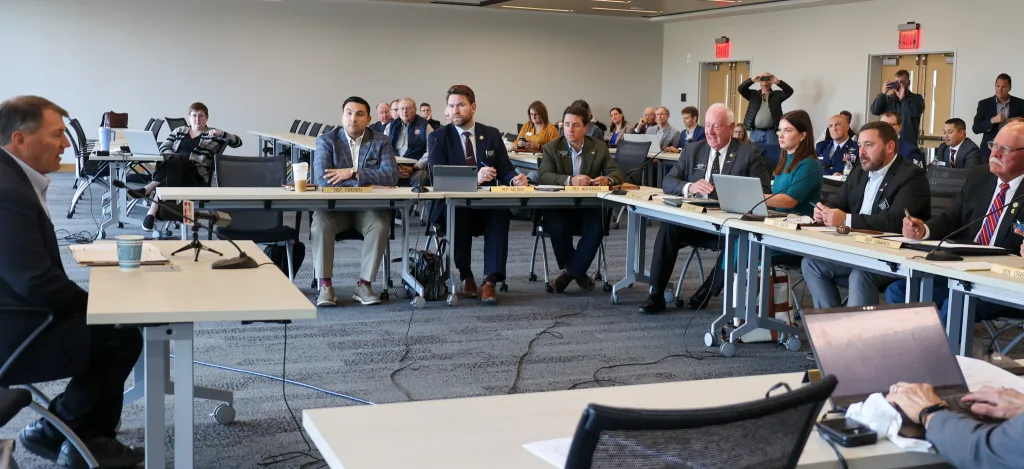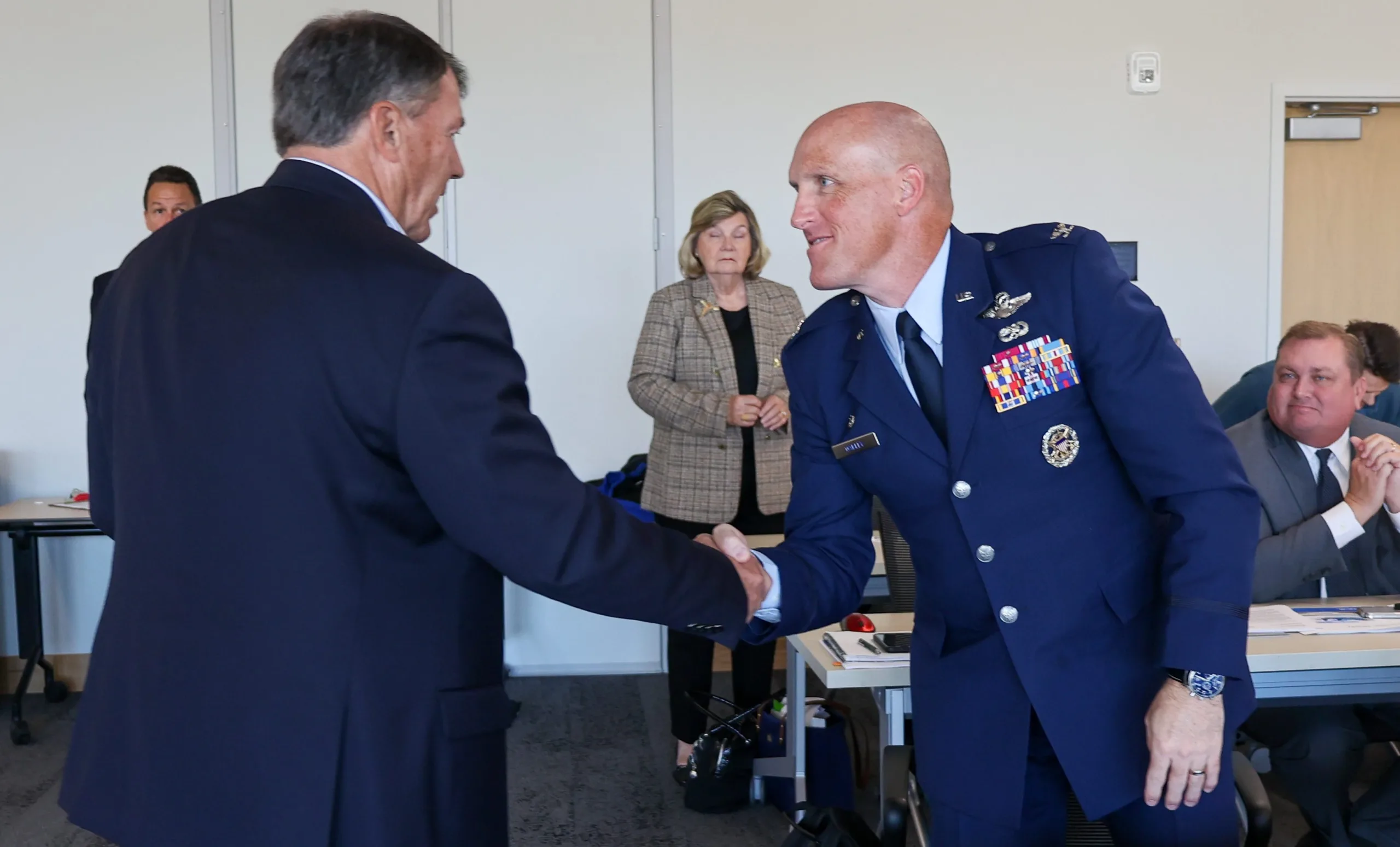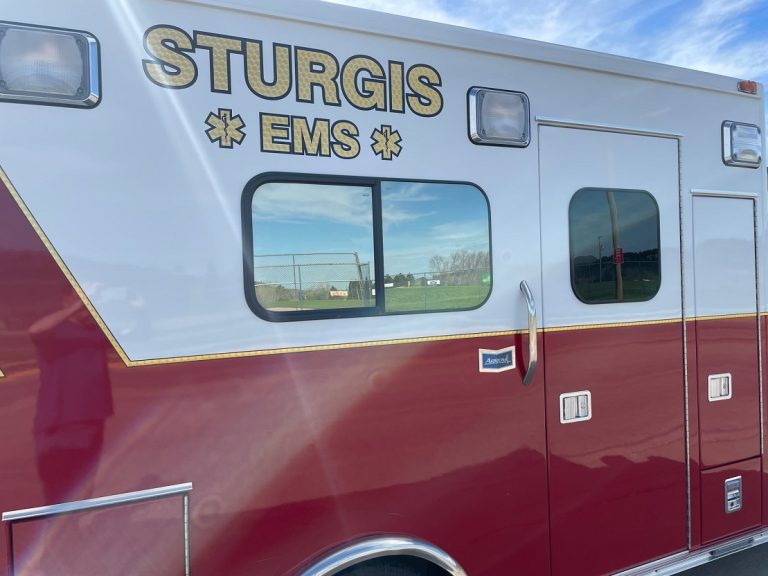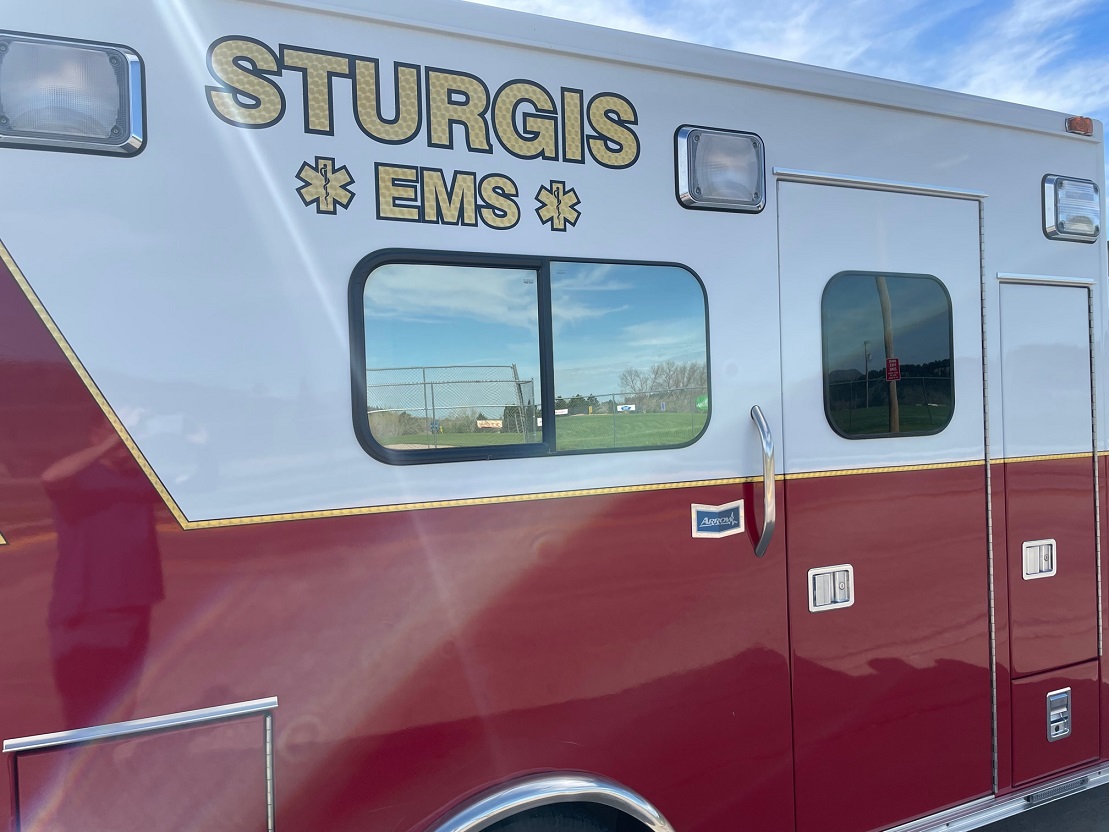RAPID CITY, S.D. – South Dakota lawmakers are being urged to spend tens of millions to help build new schools near Ellsworth Air Force Base.
And though the Legislature hasn’t traditionally earmarked tax dollars for specific capital projects in a single school district, expansion plans at the Black Hills military base and the growth in population and tax revenues anticipated to follow merit an exception.
That’s according to economic development boosters, South Dakota’s congressional delegation, and the U.S. military itself. Without some state assistance to help the Douglas School District prepare for the 4,000 more families they expect with the arrival of the B-21 Raider bomber jet, they say an estimated $1.2 billion in planned investment into South Dakota by the U.S. Air Force might never materialize.
“They’re at capacity and in need for growth. I’m not here to advocate on how the state spends its money — that’s not my role or responsibility. I am saying our children need a good education and they need facilities to do that,” Ellsworth Air Force Base Col. Derek Oakley told the Legislature’s Select Committee on Legislative Relationships with Ellsworth Air Force Base during a task force meeting in downtown Sioux Falls Thursday.
Repeating a pitch made earlier this summer to the task force in Rapid City, the airman said the technological infrastructure that will come with the B-21 requires human power. And it’s a priority of the military to maintain a high quality of life for their servicemen and servicewomen, which includes good schools, he said.

South Dakota Sens. John Thune and Mike Rounds are also backing the expansion at the airbase, helping land the B-21 at the Black Hills airbase. And a resolution authored by Rounds that would earmark $42 million for the education needs of the airbase is awaiting action in the U.S. Senate.
The former governor told the task force that he’s optimistic it can earn approval on Capitol Hill, though he cautioned it’ll likely be February or later.
But it’s anticipated the Douglas School District will need another $21 million to cover the complete build-out of the district’s planned facilities.
Rounds noted the uniqueness and challenges for a school district to finance building new facilities for a population — and tax base — that hasn’t yet arrived.
Earlier this year, Douglas school administrators told lawmakers in Pierre that Douglas is disadvantaged compared to other districts because so much of it includes the Air Force Base. And that means local governments don’t collect property taxes on federal property. As a result, payable taxable valuations — which are used to determine a district’s capital outlay fund — are smaller for the Douglas School District.
But the federal government makes up for lost property taxes to local governments in the form of impact aid funds. As of February, Douglas had more than $27.3 million in combined capital outlays and federal impact aid funds.
“We’re going to get more impact aid, but Douglas School District needs to build their school now, and it can’t build the school after the kids get there,” Rounds told The Dakota Scout after addressing the task force. “Between now and the year 2030 you’re going to see B-21s showing up … and the Douglas School District has to have that school ready to go.”
After rejecting a $5 million funding request for the project during the last legislative session, Senate and House leaders formed the summer study to vet the merits of supporting the project with a one-time funding bill.
The committee will make a recommendation for the Legislature’s leadership to consider ahead of the 2025 legislative session at a future meeting.
“There’s no doubt that the future impact for this base is going to be large and exceedingly multi-layered with the efforts that base is going to have locally, at the state level, and indeed nationally,” said Sen. Mike Walsh, chairman of the Select Committee on Legislative Relationships with Ellsworth Air Force Base.













